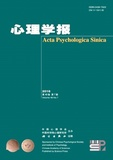The ability to regulate emotions is related to psychological, social, and physical health. The two major emotion regulation strategies are cognitive reappraisal (CR) and expressive suppression (ES). Research suggests that CR produces affective, cognitive, and social consequences that are more beneficial to the individual, whereas ES has been consistently linked to more detrimental consequences. Although an increasing number of studies have begun to focus on the neural mechanisms of different types of emotion regulation, there has not yet been systematic research on the spontaneous brain activity associated with CR and ES. Resting activity has been shown to predict performance outcomes, highlight the functional relevance of the brain’s intrinsic fluctuations in response outputs. However, to date, there have been no studies to explore the relationship between the cognitive process of emotion regulation and the brain's resting EEG activity.
The current study explored the neural mechanisms of spontaneous brain activity during two emotion regulation strategies. Electroencephalography (EEG) enables direct measurement of neuronal activity, allowing characterization of the intrinsic neural cognitive network. Thirty-six college students (17 males and 19 females, aged 17~28 years old) participated in this study. For the first part of the study, EEG data was collected from participants with closed eyes; EEG collection occurred for a duration of 6 minutes. Neurological studies of resting state EEG have identified the predominant role of theta waves in determining cognitive control effort and behavioral performance. In the current study, source localization and graph theory analysis revealed that node efficiency was significantly correlated with the two major emotion regulation strategies, and there were functional connections between brain regions in the theta band.
Then, in order to improve the reliability of the resting result obtained above, a within subjects experiment was carried out. This experiment required subjects to watch emotional pictures under four emotion regulation conditions (watching neutral, watching negative, reappraisal negative, suppressing negative). The Late-positive potential (LPP) amplitude was obtained when viewing the emotional pictures under the four conditions. LPP is an effective physiological indicator of the emotion regulation effect. It allowed us to explore the emotion regulation effect under different emotion regulation strategies, and the intrinsic functional connections and node efficiency of the brain.
The results showed that the habitual use of CR was significantly correlated with several brain regions. Specifically, the prefrontal cortex, anterior cingulate, and parietal cortex. Moreover, the brain regions significantly correlated with the LPP amplitude under CR were the parietal cortex, prefrontal cortex, parahippocampal gyrus, and occipital cortex. The brain regions that were significantly correlated with habitual use of ES included the prefrontal cortex, parietal cortex, insula, and parahippocampal gyrus. Finally, the brain regions that were significantly associated with LPP amplitude under ES included the prefrontal cortex, parietal cortex, parahippocampal gyrus, temporal cortex, and occipital cortex. Thus, these findings reveal that many brain regions are involved in these two mood regulation strategies, including the prefrontal cortex, parahippocampal gyrus, parietal cortex, and occipital cortex. In addition, the brain regions related to the different emotion regulation strategies differed slightly; specifically, CR was significantly associated with the anterior cingulate cortex while ES was related to temporal lobe and insula activation.
In conclusion, the results of this study indicate that use of CR for emotion regulation is associated with activation of multiple brain regions including the prefrontal cortex, anterior cingulate cortex, parietal cortex, parahippocampal gyrus and occipital cortex. On the other hand, the use of ES for emotional regulation was associated with activation of various brain regions including the prefrontal cortex, parietal cortex, parahippocampal gyrus, occipital cortex, temporal cortex and insula. Node efficiency or functional connectivity of these brain regions appears to be a suitable indicator for assessing the effects of the ES and CR emotion regulation strategies.




